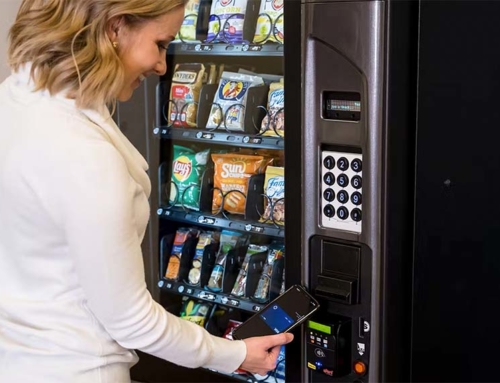Reprinted from CNN.com
For many companies, food plays a big part of workplace culture. Whether it’s free lunches every day, or an occasional perk like pizza or bagels to celebrate an accomplishment, or an extra long meeting with a catered lunch, employers often use free food to reward or motivate their staff.But workplace lunches could look very different when employees return to the office.
A packed cafeteria, buffet-style meals in conference rooms or buzzing elevators filled with lunch goers at noon won’t bode well for social distancing.
“You can’t have 40 people in a factory trying to get out the tiny entrance and drive off to Chipotle to wait in line for 30 minutes. That is a very unsafe thing to do,” said Diane Swint, head of marketplace at ezCater, a corporate catering marketplace. “In a high rise, you can’t have folks all try to pile into an elevator.”
Real estate and investment management firm, JLL, has seen a bigger focus on safety from its clients.
“Health and safety are front and center, and that includes how employees access food,” said Tom Larance, JLL’s head of experience management.
“We have had several clients come to us and ask about how we can work with them to safely provide food — whether that means providing lunches for employees so they do not need to venture out of the office, or if they need food and beverage service for small gatherings they are having within the office.”
Boxed lunches
Before coronavirus, company review website Glassdoor served employees a daily buffet-style lunch at its headquarters. It also offered snacks and drinks in the communal kitchens across its six offices.
But if lunch is provided when employees return to the office it will be different.
“[I]t will likely be individually boxed and either distributed by an individual wearing gloves and face covering or will be laid out on tables for employees to queue up and pick up,” wrote Rick Friedman, Glassdoor’s senior director of global real estate and workplace experience, in an email to CNN Business.
Snacks could be in prepackaged boxes that are distributed twice a day. Drinks will be limited in the fridge with new safety protocols regarding the use of hand sanitizer and paper towels when opening the refrigerators, he added.
“We’ll also have signage that reminds people ‘if you touch it, you take it.'”
Along the same lines, community coffee pots are likely to go away. “Some employers are transitioning employees away from a communal coffee pot and are supplying them with discounts or gift cards to local coffee shops or supplying travel mugs to bring in their own,” said Angela Simpson, human resource knowledge advisor at the Society for Human Resource Management (SHRM).
She added that cafeterias could shift to offering more pre-packaged meals and brown bag lunches.
Convene, a co-working space with 30 locations across the country, used to offer buffets and food stations prepped in its kitchens for meetings and events for its members. Now, it’s serving individually-packaged meals.
Before the pandemic, workers were able to order food on Convene’s app and it was delivered directly to their desks or sent to a pickup location. Now, workers get an alert when their food is ready and has been placed in a designated pickup zone on their floor to help minimize contact and exposure.
Community breakfasts and lunches are also going to look a little different. Instead of people congregating in a common space to eat, individually-wrapped meals will be at a pickup station to minimize contact.
Kitchen staff members also face increased safety measures. They have to change into a company-provided uniform and have their temperature checked before entering the space. They’ve also reduced the number of vendors they work with that provide food and other supplies.
“We want to limit the amount of traffic that comes through our doors,” said German Villatoro, director of culinary at Convene. “We are making things in-house as much as possible,” he added.
Robots, apps and other alternatives to the cafeteria
Some workplaces are turning to robots to provide food safety. California-based Chowbotics, has seen an uptick in demand for its fresh food robot “Sally.” Sally can whip up a variety of cold meals, including salads, grain bowls and yogurt.
Before the pandemic, one place Sally was often used was in hospitals after the cafeteria closed. Now, the machine is replacing the salad bar in the cafeteria, according to CEO Rick Wilmer.
He said the number of inquiries the company has received about Sally quadrupled in June compared to April and May.
EzCater said it has seen a five-fold increase in corporate orders of individually-packaged meals since the end of March.
The company recently launched a new app called Relish that allows workers to place food orders from designated restaurants. By ordering in through one source, crowded elevators can be avoided and the number of delivery people coming in is also reduced as individually-packaged meals arrive in a designated space and at a specified time, the company said.
Employers who use Relish can choose to set up a subsidy of 0% to 100% of meals. “Right now, the majority of businesses are picking up the tab, but we do know that some of our current customers are going to be shifting off to a lower subsidy come August,” said Swint.
Breakfast orders have to be put in the night before and lunch orders have a 10:00 am deadline. Upon delivery, orders are placed at designated spot like shelves or lockers for contactless pickup.
“Companies can stagger lunch times in a socially distant way. You can set up two or three lunch hours,” said Swint.






